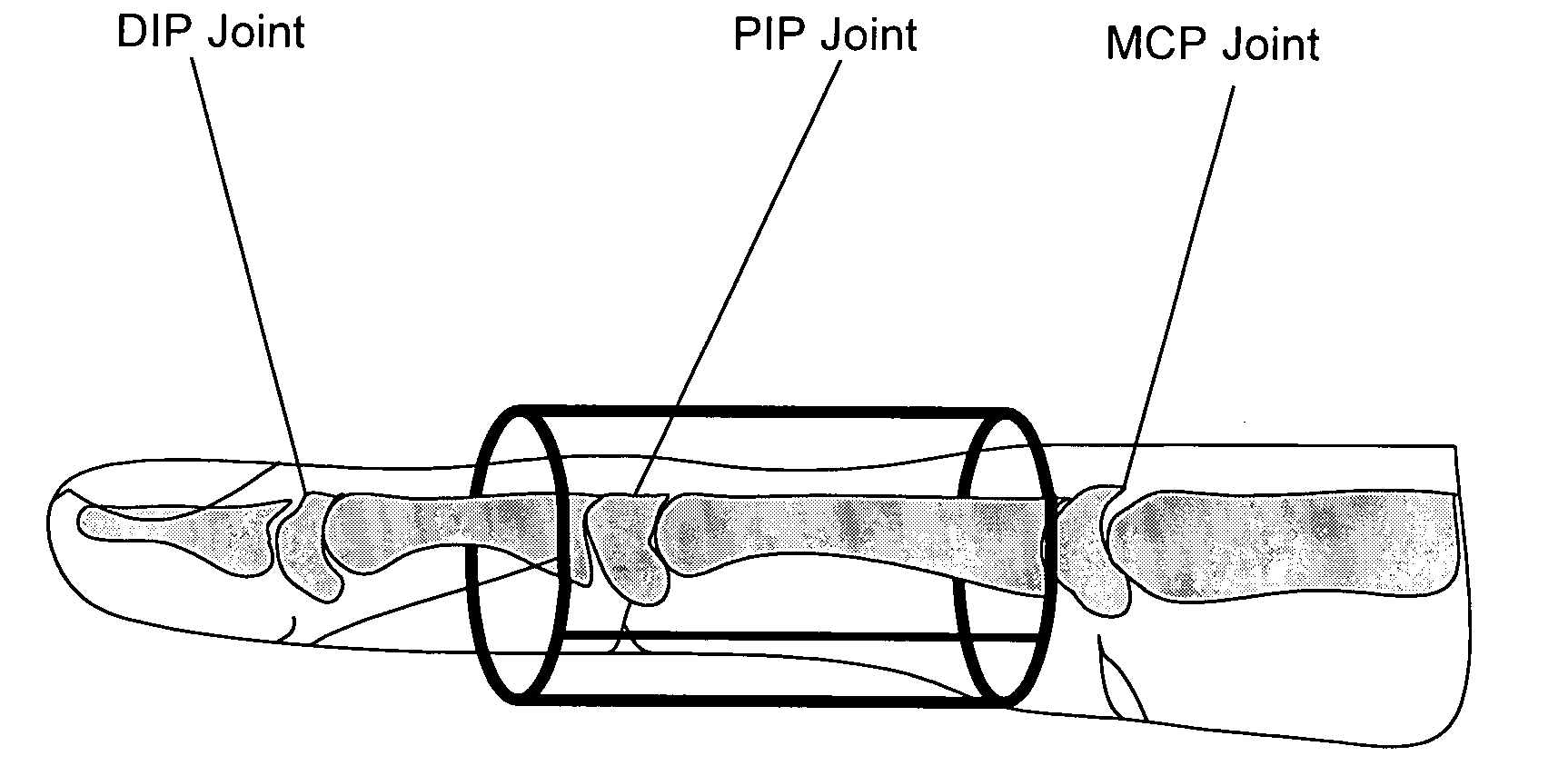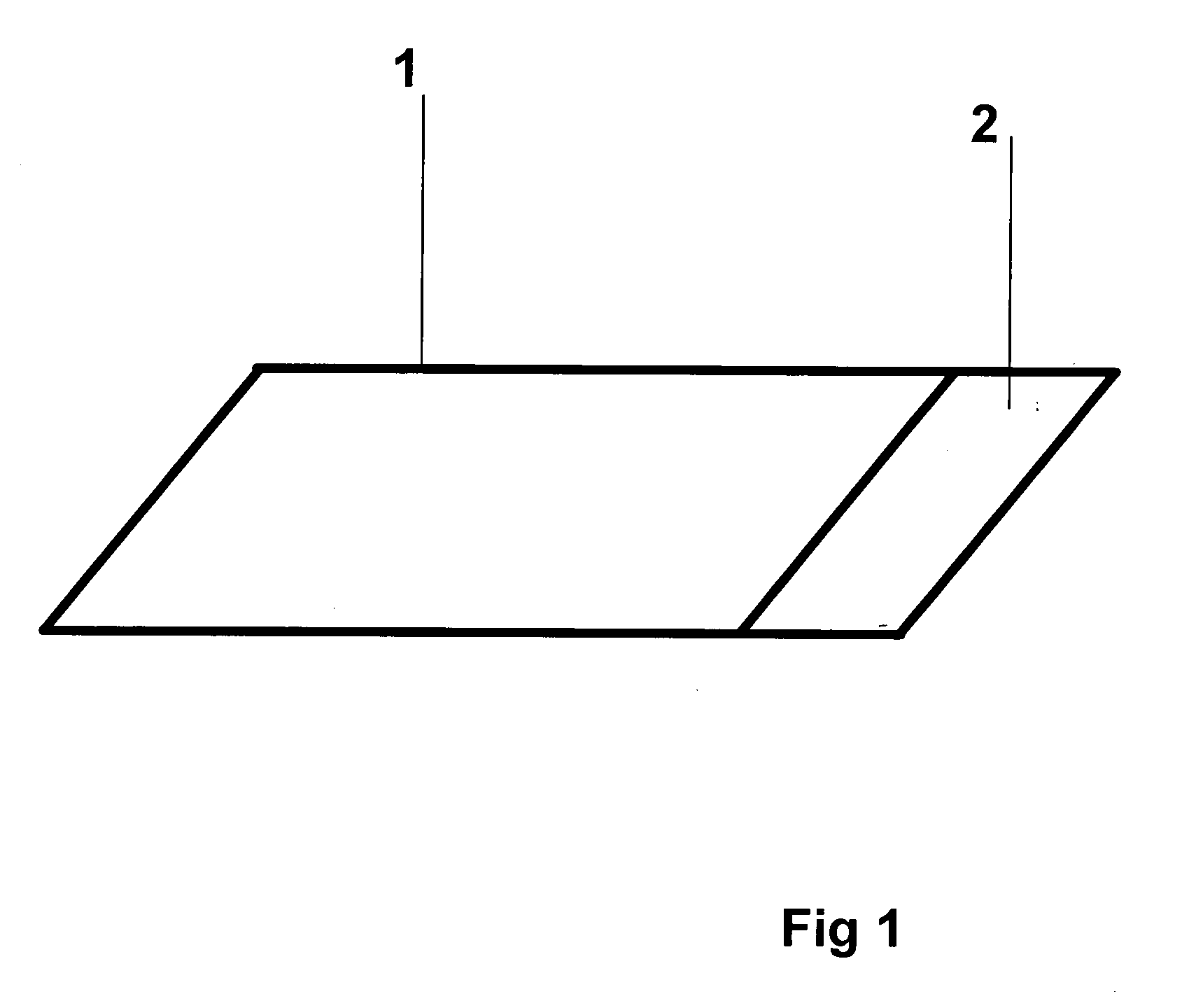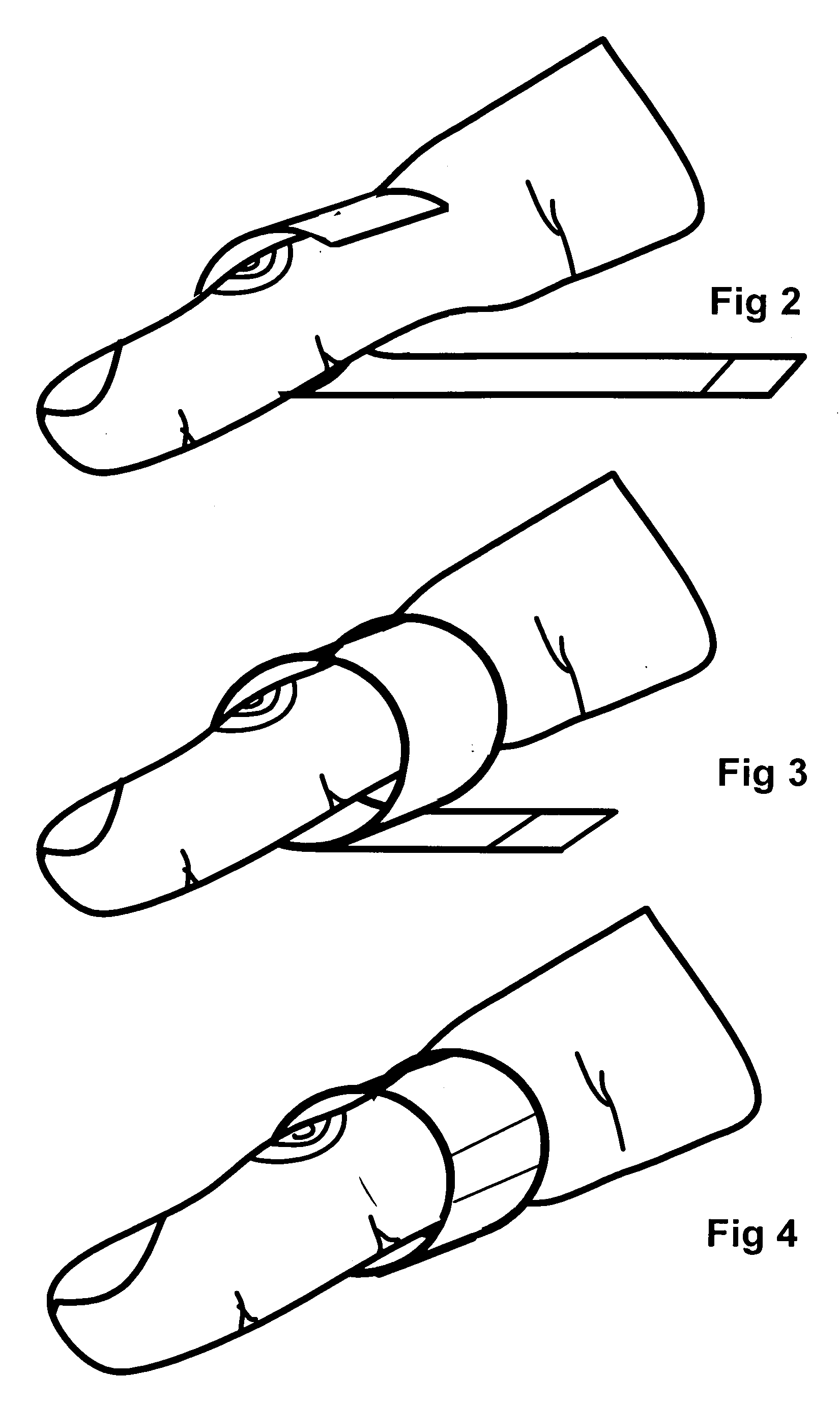Adjustable, reusable, disposable finger splint to restrict flexion of the phalangeal joints of the hand
a technology of phalangeal joints and finger splints, which is applied in the field of adjustable, reusable, disposable finger splints to restrict flexion of the phalangeal can solve the problems of unable to support such a variable range of devices, cannot be easily adjusted, and is absolutely rigid, etc., to achieve the restriction of the flexion of the finger joints of the hand, low cost, and convenient use
- Summary
- Abstract
- Description
- Claims
- Application Information
AI Technical Summary
Benefits of technology
Problems solved by technology
Method used
Image
Examples
Embodiment Construction
[0026]FIG. 1 is an overall view of the present invention. The overall length is 4 inches. The width is 1 inch. The last one-half inch of the material (2) is coated with a pressure sensitive adhesive. The device is constructed of soft vinyl plastic that is 12 mil (0.30 mm.) in thickness and clear in coloration with a matte finish. This material is highly conformable and resistant to aging, sun, water, fungus, bacteria, oil, acids, alkalis and corrosive chemicals. It provides good abrasion, impact and rupture resistance with a tensile strength of 16 lbs. / in and elongation at break point of 150%. The adhesive is synthetic rubber resin, applied to one side of the distal one-half inch of the device (2).
[0027]The vinyl material is lightweight and easily shaped into the tubular form. At this thickness (0.3 mm) it is rigid enough to adequately restrict the flexion of the PIP joint to prevent the ‘triggering’ of the tendon but still pliable and flexible enough to be comfortably worn for long...
PUM
 Login to View More
Login to View More Abstract
Description
Claims
Application Information
 Login to View More
Login to View More - R&D
- Intellectual Property
- Life Sciences
- Materials
- Tech Scout
- Unparalleled Data Quality
- Higher Quality Content
- 60% Fewer Hallucinations
Browse by: Latest US Patents, China's latest patents, Technical Efficacy Thesaurus, Application Domain, Technology Topic, Popular Technical Reports.
© 2025 PatSnap. All rights reserved.Legal|Privacy policy|Modern Slavery Act Transparency Statement|Sitemap|About US| Contact US: help@patsnap.com



